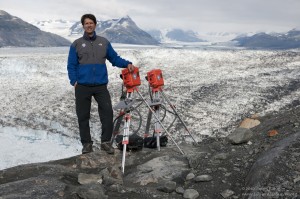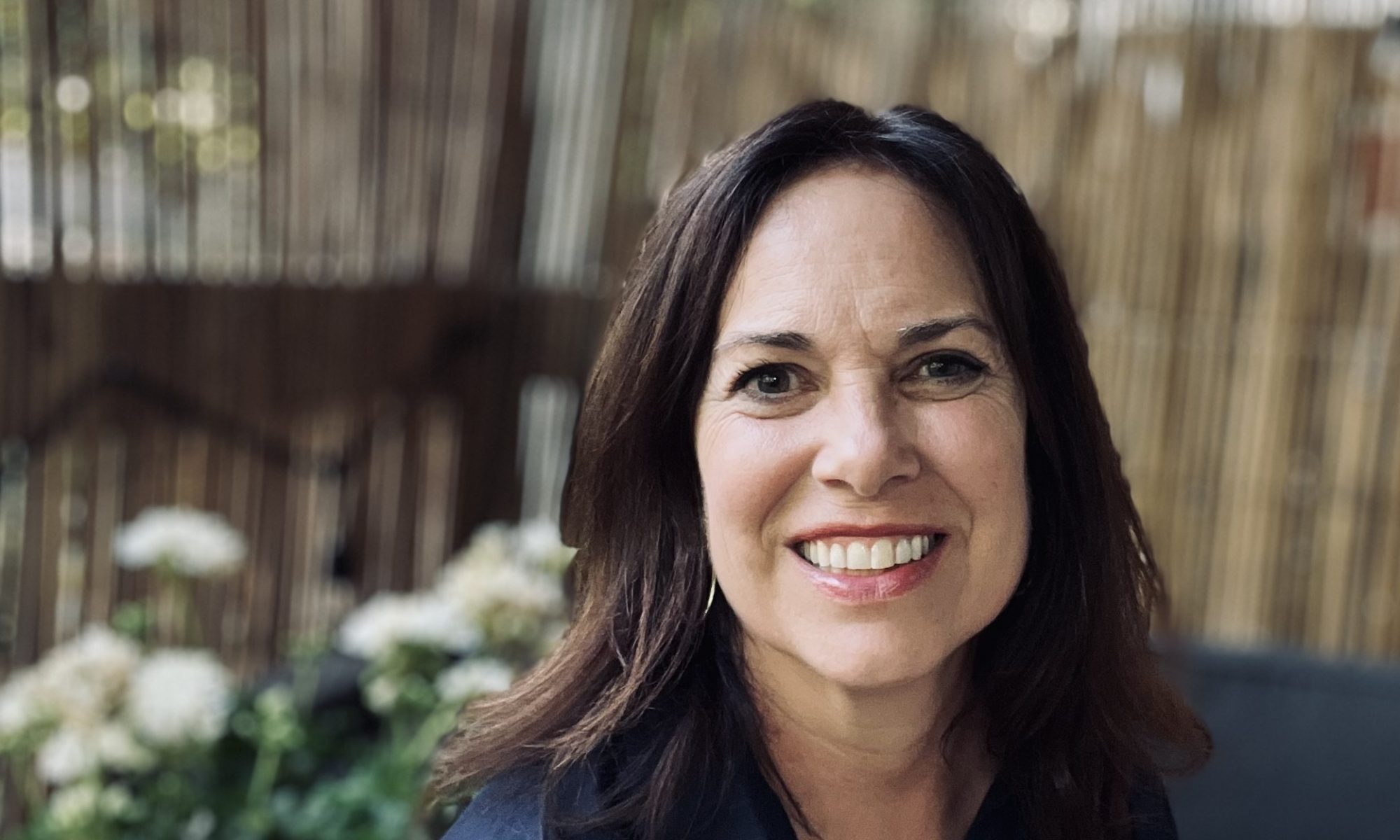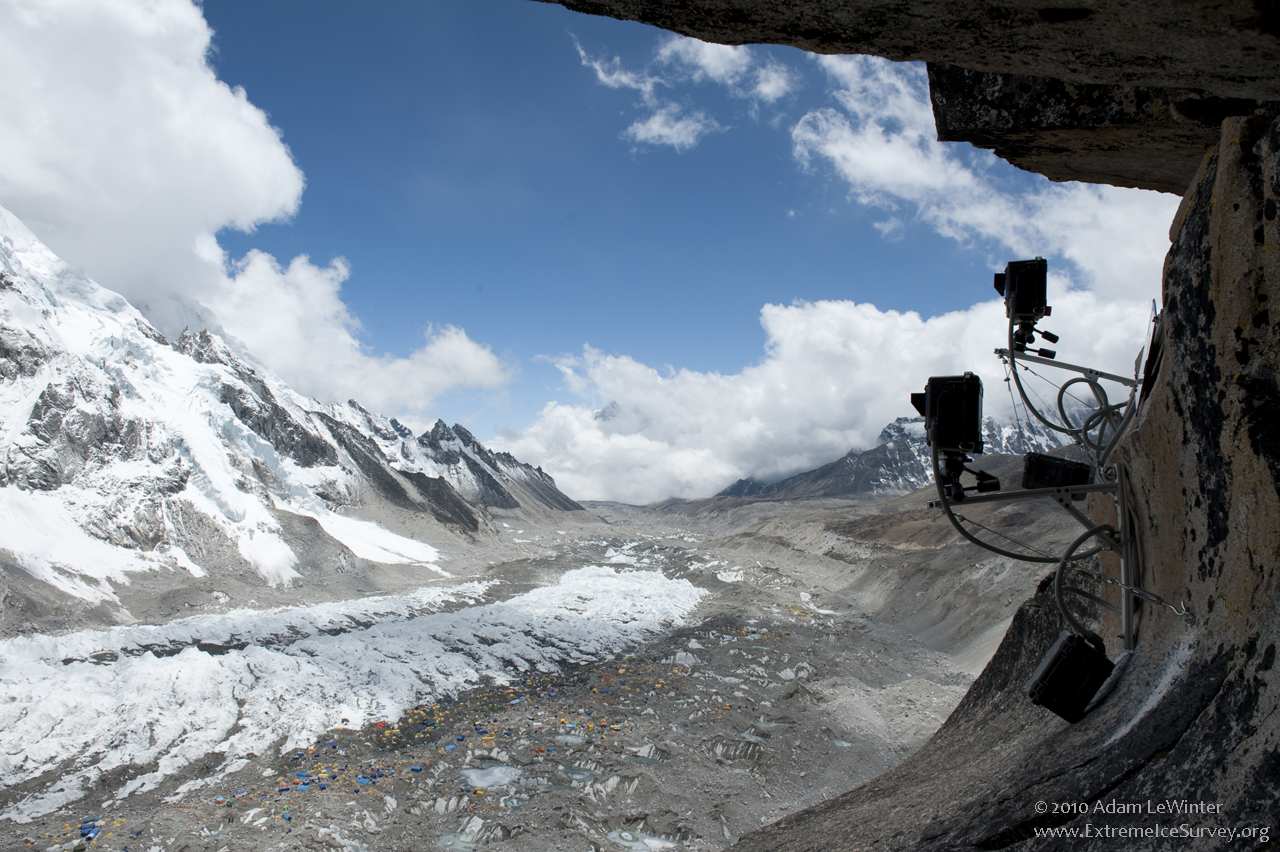Using field trips, editorial cartoons and even parental objections, four innovative teachers are bringing global warming out of the science classroom. The Daily Climate has the second story in my two-part series.
Climate science education graduates to the next level
Like evolution, climate science has opened rifts in classrooms across the United States. Educators are lifting climate out of its narrow unit in middle school science – an effort, they hope, that will improve science literacy overall. Read the first in my two-part series.
PETER GLEICK: What would it take to provide all people with access to clean water?

BY LISA PALMER
When PETER GLEICK is invited to give a speech, chances are good he’ll receive a cup of tap water to quench his thirst. “The people who put bottled water on the podium are increasingly embarrassed, and that’s good,” said Gleick recently in a speech at the Wilson Center in Washington, D.C. Gleick, a hydrologist, is co-founder and president of the Pacific Institute in Oakland, Calif.
In 2003 he was named a MacArthur fellow for his work. He is the author of seven books, including the biennial water report, The World’s Water, which examines the most pressing freshwater issues; volume 7 of that series was published in October 2011. His book Bottled and Sold: The Story Behind Our Obsession with Bottled Water, published in 2010, shows the journey of how water has moved from a free natural resource to a commercial product with multimillion-dollar ad budgets.
I recently caught up with Gleick and we talked about access to clean water. Here’s the interview that appears in the Winter 2012 issue of Momentum, a publication of the Institute on the Environment at the University of Minnesota.
A billion people worldwide are without access to drinking water, and 2.5 billion people are without access to adequate sanitation. What would it take to provide all people with access to clean water?
I think we have the technology. I think we have the money. I think we have the knowledge to meet basic human needs for everyone. What’s been missing is the commitment and the will on the part of local and national governments to meet those basic needs.
There’s this classic expression: It’s not rocket science. Part of the problem in the water world is that some of these issues are more complicated than rocket science because they are not technical issues; they are social and political issues, which are always harder than rocket science. Maybe the shortest answer is what’s really needed is a commitment to solve the problem. I am not that optimistic about it. I have been working on these issues a long time. In some ways we’ve made progress. I sometimes despair that we are going to make the commitments necessary to solve this problem.
What is keeping us from making the commitment?
It has to be the choice of communities or nations to put water issues at the top of their agenda. I think about South Africa, where there is still enormous unmet need, but the government has made progress because they made it a national commitment.
Even here in the United States not everyone has access to safe drinking water. There are poor counties in the central valley of California that don’t have safe drinking water. We know that these communities don’t have safe drinking water, but the money to either clean up the groundwater or to tie those communities to a neighboring water system that has safe water hasn’t been made available. Again, it is not a technological problem, it is not an economic problem—it is a problem of commitment. This is the United States. This isn’t Zimbabwe.
What worked in South Africa, won’t necessarily work in another place. This is another reason it is a problem. Political models differ from place to place. What works in one region may not work in another. There isn’t a single-solution-fits-all answer.
What is your level of optimism that we’ll achieve a solution?
With respect to water; if there is any reason for optimism, it is in the fact that it is not a technological problem. We do have solutions. There are success stories out there. We are making progress. But we have to get away from the idea that there is a single solution, and we have to get away from the idea that what worked in the 20th century is going to work everywhere in the 21st century.
The fact that we failed to solve these problems is sad and inexcusable, but it doesn’t mean the problems can’t be solved. We just have to be smarter and be more committed to solving them.
Spending on science
 Funding for climate change research is looking healthy despite austerity measures and conservatives clamouring for cuts. My latest story appears in Nature Climate Change.
Funding for climate change research is looking healthy despite austerity measures and conservatives clamouring for cuts. My latest story appears in Nature Climate Change.
Water: The Next Sustainability Bombshell
Oil might hog the headlines, but many experts believe water is the commodity that’s particularly bad for consumer goods groups.
When brewing giant SABMiller tentatively released its “blue sky” plans in 2010 for a floating brewery that could be towed from port to port depending on where water was most plentiful, the business press immediately leaped on the idea of a “beer ship.” Many dismissed it as fanciful, or a publicity stunt. But what SABMiller and other multinationals have realized is that water scarcity is becoming business critical. Restricted access to water, or higher costs to use it, is every bit as vital to their future planning as the better-known issues surrounding oil.
The Water Resources Group, an industry body, says water supply will fall by 40 percent globally before 2030. Even allowing for a margin of error, that has profound implications. The drinks industry is a visible and intensive user of water, but others are equally at risk — food and consumer goods manufacturers are also heavy water users, and any industry which relies on silicon chips or paper-based products will face a similar chain reaction. Little wonder Nestle chairman Peter Brabeck-Letmathe has mate water the company’s sustainability priority and said in 2008: “I am convinced that if we carry on as we are, we will run out of water before we run out of oil.”
“We all know water is both abundant and scarce. It covers about 75 percent of the earth’s surface, both in liquid and frozen form, but only around three percent of this water is fresh and able to be used,” says Jo Beatty, a Director in KPMG’s Climate Change and Sustainaiblity practice in the US. Growing populations, rapid industrialization and climate change form a triumvirate of pressures on water’s future.
Water is a global concern, yet its impacts are local. Beatty lists them as: physical risks, such as reduced water availability and quality; regulatory risks from increased standards and licensing requirements for water abstraction, qualilty, reuse and recycling, and waste water discharge; and reputational risks, including opposition to local water withdrawals and discharges.
“One reason that the issue of water goes unexamined by many leadership teams is that water is low cost. But while it may be cheap, that in itself represents a risk,” said Dr. Nick Wood, associate director with KPMG’s Climate Change and Sustainability practice in Australia. “When we do our water strategy work we turn this around. Where water supplies are at risk, we examine costs associated with alternative sources of water.”
Wood said companies are beginning to understand that the water value supply chain is full of blind spots and market failures. “Water has not been subject to strategic thinking by users or transparent economic planning by governments. The result? It may be cheap, but it can run out. Its price is not its value.”
No single business sector is exempt from the risk of water scarcity. Neither is any region. While many countries in the Middle East have spent heavily on desalination, the World Wildlife Fund (WWF) says the situation is “critical” in India, Australia and South Africa.
Barton Alexander, Chief Corporate Responsibility Officer at Molson Coors, says water issues affect his business across the world. And the amount of water used is only part of the equation. He points to his cotton shirt as an example. “How much water is in this? Do you care where it came from? Was the cotton grown in an area where the water came from natural rainfall, or was it grown where the water was pulled out of the ground for irrigation in an area where then people have less access to water?”

While Alexander says Molson Coors always strives for increased water efficiency, other factors make sustainability decisions complex. A facility in Canada recently changed the way it washes returnable bottles. The company found it was more energy efficient to use cold water in the new process, but this also meant more water was used. “We had to think about which was more important: energy savings or water use. There was adequate supply so we went with the cold water process and reduced our carbon footprint,” Alexander said.
A strategic focus is the best way to tackle the issue, says Wood. “Many companies tell us that they use four liters of water to make one liter of drink, But they can’t say whether the fruit providers, dairy farmers, or hop growers will be able to provide them with raw materials or even be in business next year,” said Wood.
Wood recommends conducting a water risk management right across the supply chain, factoring it into risk management and continuity planning. The results can be illuminating — and alarming. The Water Footprint Network estimates that the full life cycle of a glass of apple juice includes 190 liters of water, while a T-shirt uses 2,700 liters. Such estimates are open to question, but there is little doubt that intensive production processes, including industrial agriculture, are a major drain on water resources.
Suhas Apte, Vice President of Global Sustainability at Kimberley-Clark, wrestles with water on a daily basis. He says the company has used a variety of methods for assessing the impact of water scarcity, including a conservation program and a global risk assessment which included suppliers. “We extended the risk assessment to provide a multi-criteria analysis that brings in a number of factors such as reputational risk, water efficiency, population access to water and sanitation, regulatory risk, and future risks,” he said.
Kimberly-Clark’s sustainability team also led a water life cycle assessment on its toilet tissue brands. “It revealed that 75 percent of water use was due to toilet flushing in the home,” Apte said. The company launched a SmartFlush device which saves up to one liter of water per flush.
KPMG member firms across the globe work with clients to conduct water risk assessments for their operations and supply chains, but most of the emphasis is on identifying the metrics companies need for strategic planning: “Companies should understand the real value of water and the associated economics that impact the company. These include capital investments for new or retrofitted infrastructure and added operational costs for supply, treatment and disposal,” said Beatty.
Developing economies are wrestling with complex supply chain issues. In some areas, the local population may lack access to clean water. PepsiCo is one of a number of multinationals to formally recognize the “human right to water.” Others, says Beatty, may decide not to relocate or expand manufacturing operations in areas which could face future water issues.
There is still hope. Beatty says far-sighted companies can both improve water resources in their local communities, and adopt a “catchment” approach to water use that engages both upstream and downstream use. Those who see water as the “new oil” should consider the reality: some of the finest scientific minds are working to develop viable alternatives to oil. There is no substitute in the pipeline for H20.
This article was first published in the April 2011 issue of Consumer Currents and is copyrighted.
Another Jobs Push
 Almost two years ago, I reported on President Obama’s jobs plan, which he outlined in a speech at the Brookings Institution. Time has passed, and yet my report on how to get more Americans back to work couldn’t be more relevant today. Here’s the story that appeared on Dec. 11, 2009, in U.S. News & World Report:
Almost two years ago, I reported on President Obama’s jobs plan, which he outlined in a speech at the Brookings Institution. Time has passed, and yet my report on how to get more Americans back to work couldn’t be more relevant today. Here’s the story that appeared on Dec. 11, 2009, in U.S. News & World Report:
The Next Jobs Push
Obama unveils a three-part plan for stimulating more jobs—to mixed reviews
By Lisa PalmerA year ago, Americans were losing their jobs at a rate of 700,000 per month. Now, even as that rate has dropped to 135,000 per month, the ranks of unemployed workers still top 11 million. So it’s no surprise that figuring out how to get America back to work has taken the spotlight.
President Obama this week announced in a speech at the Brookings Institution a new “effort to accelerate job growth [in] those areas that will generate the great- est number of jobs while generating the greatest value for our economy.” His plan outlines three main policies to spur job growth. Small businesses would receive a tax credit if they hired new workers, and they would get relief from capital-gains taxes on small-business investments. Second, the plan includes money for key infrastructure improvements, such as building roads and construction projects. Third, it proposes a “cash for caulkers” rebate program that would provide financial incentives for homeowners to make their houses more energy efficient. In addition, Obama called for an extension of unemployment insurance and more aid to state and local governments facing budget crunches.
The plan has drawn mixed reviews from economic policy experts. Labor market economist Heidi Shierholz of the Economic Policy Institute says Washington insiders are starting to realize the enormity of the job crisis. “There is a strong consensus amongst economists that the February stimulus act is working,” she says. “But it wasn’t big enough to get us back on track. We need more.”
Harry Holzer, an economist at Georgetown University’s Urban Institute, is pleased with some components of the plan. “It was very important to extend money to states and localities to prevent additional job loss,” he says. But other parts of the plan are a mishmash: “It is not as well targeted to job creation as I would have liked,” Holzer says.
Both Holzer and Shierholz advocate direct job creation initiatives, which were absent from Obama’s proposal. Holzer said a $30 billion job creation plan to set up a public service employment program would put 1 million Americans back to work.
Peter Morici, a professor at the University of Maryland’s School of Business, is critical of both the original stimulus plan and the new proposal. “What businesses need are customers,” he says, arguing that a greater proportion of the plan’s funds should be directed to things like construction, which would stimulate consumption, which would in turn create jobs.
Obama did not talk about the plan’s price tag. Some lawmakers estimate it would total roughly $200 billion, the amount the Treasury Department estimates has been trimmed from the projected cost of the Troubled Asset Relief Program. But that could face resistance. Republicans, already howling that the $787 billion in the original stimulus plan was wasted, argue that any money saved should be used for deficit reduction.
Rising Temperatures and Threats to Health
More Concerted Action on Public Health
Coming from Medical Community Interests:
The public health/climate change connections recognized by the medical establishment might help in informing the public at large. Policy experts say a growing awareness of the public health/climate linkage could be a key in breaking through political logjams impeding action on mitigation and adaptation.
Consider some climate change/public health indicators:
-Roughly 10 million Americans suffered from asthma in 1990. Today, twice as many do — a surge that has been linked to climate change.
-Allergy season is becoming longer and pollen counts are stronger.
-Diseases like dengue fever and malaria, previously seen only in warmer areas, are now popping up in places like Florida and Texas.
-The ticks carrying Lyme disease — once limited to southern New England and mid-Atlantic states — have expanded their ranges to Maine.
-Extreme weather patterns brought about by climate change are expected to cause an increase in injuries and illness.
-And projected heat waves are likely to be so intense that many more people will have trouble simply cooling themselves and, in some cases, remaining hydrated.
As science points to the troubling health consequences of climate change, the American Medical Association and various public health organizations are bracing themselves. In April the AMA published an editorial warning that climate change is putting public health at risk. It stated:
Scientific evidence shows that the world’s climate is changing and that the results have public health consequences. The American Medical Association is working to ensure that physicians and others in health care understand the rise in climate-related illnesses and injuries so they can prepare and respond to them. The Association also is promoting environmentally responsible practices that would reduce waste and energy consumption.
To help doctors prepare for climate-related illnesses and injuries, AMA has held continuing medical education courses on climate change in three states, most recently in Florida. A fourth one is to take place in Illinois. The courses stem from a grant from the Harvard Medical School Center for Health and the Global Environment.
The American medical community’s new advocacy measures arrive on the coattails of climate change policy statements made by other health organizations. In 2007, the American Academy of Pediatrics. AAP, warned of negative health effects of climate change on children. In a statement, Dana Best, MD, MPH, and fellow of AAP said, “As the climate changes, environmental hazards will change and often increase, and children are likely to suffer disproportionately from these changes.”
In 2008, the American Nurses Association declared that “Nurses have the responsibility to be aware of broader health concerns such as environmental pollution,” and acknowledged the “threats posed by global climate change on a massive human and environmental scale.”
A Critical Mass Expresses Concerns
In May 2009, the health community took an especially firm position on climate change when a joint commission led by the British medical journal The Lancet and University College London Institute for Global Health published findings that climate change poses the biggest public health threat of this century. The report outlined “major threats” to global health involving disease, water and food security, and extreme weather events, and added a cautionary statement: “Although vector-borne diseases will expand their reach and death tolls, the indirect effects of climate change on water, food security, and extreme climatic events are likely to have the biggest effect on global health.”
That Lancet study prompted Linda Marsa, a California-based medical and health writer, to do her first reporting on health effects of climate change. “At the time, there was stuff published here and there,” said Marsa, a contributing editor at Discover magazine. “I had to dig down rabbit holes to find information.” But Marsa’s reporting persistence produced a bonanza, and the result was “Hot Zone,” a feature article published in Discover in December 2010 that explores the magnitude of global health impacts of a changing climate.
A Medical, Health Journalist Newly ‘Energized’
Now, Marsa believes a “critical mass” of scientific studies over the past two years has zeroed-in on strong evidence of health consequences. “I personally think climate change is going to be the biggest science story for the rest of my career,” she said. “As a medical and health writer, frankly, this has fascinated and energized me.” Marsa is now working on a book based on her Discover story. It is to be published next year by Rodale Press.
Marsa is among a growing number of journalists now covering health in the context of climate change. The Association of Health Care Journalists, AHCJ, has helped members develop their knowledge of climate change by providing tipsheets, workshops, and panel discussions at conferences. The group has jointly conducted week-long health journalism fellowships with the Centers for Disease Control and Prevention (CDC), and climate change has been among the segments covered over the past five years. In 2008 and 2009, the AHCJ’s annual health journalism conference also addressed the climate link with allergies, asthma, disease, heat illness, and injuries.
Leonard Bruzzese, AHCJ executive director, says the organization regularly provides members access to climate-related health topics. For instance, a resources guide for reporting on extreme heat included topics ranging from heat-related deaths among crop workers and how heat-related deaths are underestimated to prevention of heat-related illnesses. The four-page resource guide features links to science articles from magazines and newspapers and summaries of journal articles and scientific resources from public and private institutions. AHCJ has provided similar resource guides for reporting on other public health consequences of climate change.
Scientists, too, are working across disciplines to study the health effects of climate change. Lewis Ziska, a plant physiologist at the U.S. Department of Agriculture’s Crop Systems and Global Change Laboratory, worked with colleagues at the National Allergy Bureau and Aerobiology Canada to study effects of climate warming on ragweed plants from Texas north to Saskatchewan, Canada, from 1995 to 2009. The study confirmed that pollen season is extending further into the fall, with the greatest effects at the northern latitudes.
“We were able to confirm that climate change is having an effect on pollen, that it is happening in real time, and we are seeing a real signal,” Ziska now says.
Public Health Issues Sharpening Public’s Focus
The medical community has a formidable challenge, in both addressing the health consequences of climate change and advocating for policy, according to Dan Ferber, co-author, with Harvard Professor Paul Epstein, MD, of Changing Planet, Changing Health.
“They’re dealing not with a single health effect but with a large-scale change with many health effects such as the possible spread of infectious diseases and increase in outbreaks due to extreme weather; the effects of worsening heat waves and other extreme weather; worsening respiratory disease, including allergies and asthma, and more,” Ferber said. “The medical community is realizing that good human health depends on a healthy environment, and they’re starting to broaden their focus to recommend policy efforts to mitigate and adapt to climate change, where once they might have considered this beyond their purview.”
Ferber says he thinks public health professionals are well suited to address the human health risks posed by climate change because they’re professionally charged with protecting human health.
“To the extent they take that role seriously and educate themselves about the health risks posed by climate change, they can exert real influence on policymakers,” Ferber said. “Climate scientists have the credibility, but their cautious and carefully parsed pronouncements about the science don’t necessarily connect well with the concerns of ordinary Americans. Policy folks are also often depicted as ivory-tower types in what passes for public discourse on this subject. I think it’s a lot harder to dismiss the serious concerns of bona fide health leaders.”
Despite policy pronouncements and urgent warnings, Ferber said he thinks the medical community is failing on some levels by not yet connecting well with the average health worker. Ferber has talked to doctors and nurses about it. “They’ve complained that they’re aware of the connections between climate change and health but their colleagues don’t seem to take these concerns seriously,” he said. “And they’ve certainly not yet built a large movement in these professions akin to the effort by physicians in the 1970s and 1980s to ease the risk of nuclear war.”
Climate change is responsible for an increasing number of direct and indirect health problems. Communicating these risks of climate change will prove key to understanding how the public can prepare for it. Many who follow the field believe that having the public better understand and appreciate the public health consequences of a warmer world may help break the political logjam in the way of meaningful mitigation and adaptation measures.
**NOTE: After this article was published, Ed Maibach, of the Center for Climate Change Communication at George Mason University, told me about a new project he has been working on with public health officials. The climate change communications primer, “Conveying the Human Implications of Climate Change,” will soon be co-branded with the Center for Disease Control, he said. The primer will also include a “lunch and learn” slide deck to help public health officials conduct briefings.
This article was originally published on The Yale Forum on Climate Change and the Media on June 7, 2011. Article illustrations have been changed.
This Week In Earth: Climate Suits
This Week In Earth reports that Texas and 14 other states sued the U.S. government to protest the EPA’s finding that greenhouse gases threaten public health and welfare. Meanwhile, a California judge suspended the cap-and-trade portion of the state’s Global Warming Solutions Act until it is brought into compliance with another environmental law. As state and federal climate legislation encounters hefty legal challenges, environmental protections are shaped increasingly by judicial — rather than legislative or scientific — processes.
Here’s my take: Legal experts say linking greenhouse gas emissions to specific regional impacts and damages is daunting, despite strong evidence that climate change is caused by human activities. Nevertheless, William Buzbee, professor of law at Emory Law School, told me, “Individual states continue to be quite active in addressing adaptation issues. That’s where you’ll see science and engineering influencing the courts through briefs.”
On the federal level: The Supreme Court heard arguments last month on whether greenhouse gases can be considered a public nuisance in Connecticut v. American Electric Power. This week, Patrick Parenteau of the Vermont Law School said that the court will likely rule that they can. He added, “I’ll be curious to see whether the COURT addresses the uncertainty surrounding congressional efforts to repeal EPA’s authority.
Looking forward: As climate change impacts become clearer, law experts say that courts will likely need more information through friends-of-the-court briefs written by climate scientists. Many climate scientists tell me they are not prepared to write affidavits requested to challenge EPA’s scientific information in the court record.
Go to This Week In Earth for the complete story.
Read more about this topic in The Yale Forum.
Ice Flows: What do 28,000 time-lapse photos tell us about glaciers?
Colorado-based photographer-adventurer James Balog, of the Extreme Ice Survey, is working on a new series of time-lapse images of the ice and glaciers on Mount Everest. In my recent story for Slate, I obtained exclusive use of some of the earliest images from the project, including a video of the Khumbu Icefall, one of the most dramatic areas of glacial change over the past 50 years. The movement of glaciers is subtle to the human eye. But with time-lapse photography, Balog can compress nine months into 10 seconds and make glacial change patently visible.
 Glaciers move at, well, a glacial pace. But in recent decades, ice has been disappearing from the Arctic and mountain ranges at a shocking rate. Ice that formed over centuries is now melting in a matter of years or months, contributing to rising sea levels and profoundly altering hydrologic cycles and water supplies to regions that rely on glaciers for their water source. Still, the movement is so gradual that its scale is invisible to the casual observer. So how do you communicate the rapid melting of glaciers to nonscientists? Forget graphs, charts, and ice core measurements. Bring in time-lapse photography, a technique to compress a massive number of sequential photographs, taken at set intervals, into what looks like a sped-up video. James Balog, pictured to the right, is the founder and director of the Extreme Ice Survey, a spectacular set of time-lapse images chronicling glacial movement—the largest project of its kind. Here, Balog stands near Alaska’s Columbia Glacier, which moves at 50 feet per day, or eight times faster than it did 30 years ago.
Glaciers move at, well, a glacial pace. But in recent decades, ice has been disappearing from the Arctic and mountain ranges at a shocking rate. Ice that formed over centuries is now melting in a matter of years or months, contributing to rising sea levels and profoundly altering hydrologic cycles and water supplies to regions that rely on glaciers for their water source. Still, the movement is so gradual that its scale is invisible to the casual observer. So how do you communicate the rapid melting of glaciers to nonscientists? Forget graphs, charts, and ice core measurements. Bring in time-lapse photography, a technique to compress a massive number of sequential photographs, taken at set intervals, into what looks like a sped-up video. James Balog, pictured to the right, is the founder and director of the Extreme Ice Survey, a spectacular set of time-lapse images chronicling glacial movement—the largest project of its kind. Here, Balog stands near Alaska’s Columbia Glacier, which moves at 50 feet per day, or eight times faster than it did 30 years ago.
Click here to read my slide show essay in Slate on the Extreme Ice Survey.
(Photo courtesy of Extreme Ice Survey.)
News vs. Views
Science journalism is in big decline. In 1989, 95 U.S. newspapers had dedicated science sections. Today only a third still do. Science blogging now supersedes traditional reporting.
What does the shift from mainstream media to blogs and agenda-based media mean for society’s ability to address environmental issues? Does it reduce the quality and credibility of information? Or enrich us with a greater multiplicity of voices? To learn more, Momentum asked a science journalist in the mainstream media, along with an online reporter who focuses on the politics of energy and the environment.
Seth Borenstein
Science Writer, The Associated Press
 I don’t see the decline in science writing as bad as other parts of journalism. At AP, we haven’t had cuts that affect science or environment writing at all. But for the public, the changes in media consumption habits means everything is more fractionalized and factionalized. People want to read and view people who agree with them, and they don’t want to see or hear anything that is not part of their worldview. It has always been that way to some extent, but it has gotten easier. If I were a climate change denier and only wanted to listen to Rush Limbaugh, I could have done that 10 years ago. If I were a Greenpeacer who didn’t want to hear the other voices that conflicted with my worldview, I could’ve found my news. With new media, it allows things to echo more on both ends of the spectrum.
I don’t see the decline in science writing as bad as other parts of journalism. At AP, we haven’t had cuts that affect science or environment writing at all. But for the public, the changes in media consumption habits means everything is more fractionalized and factionalized. People want to read and view people who agree with them, and they don’t want to see or hear anything that is not part of their worldview. It has always been that way to some extent, but it has gotten easier. If I were a climate change denier and only wanted to listen to Rush Limbaugh, I could have done that 10 years ago. If I were a Greenpeacer who didn’t want to hear the other voices that conflicted with my worldview, I could’ve found my news. With new media, it allows things to echo more on both ends of the spectrum.
 The AP has a kind of credibility that blogs and agenda media don’t have, but it’s more than that. For my work, I hold a mirror to the world in terms of science, climate change and the environment. I still think people want to read and view that. I have been covering science and the environment for about 20 years, and so we provide the expertise. We are not here to feed one worldview or another.
The AP has a kind of credibility that blogs and agenda media don’t have, but it’s more than that. For my work, I hold a mirror to the world in terms of science, climate change and the environment. I still think people want to read and view that. I have been covering science and the environment for about 20 years, and so we provide the expertise. We are not here to feed one worldview or another.
The shrinkage of the conventional press is neither bad nor good, it just is. If you want to read nothing but agenda-based media, you can do it. But you will be more informed if you read reality-based media. Either way, I don’t think it is the media’s job to have people be more or less engaged with science and the environment. Whether people are engaged should have little to do with media.
Darren Samuelsohn
Senior Energy and Environment Reporter, POLITICO
 While there is definitely a decrease in the number of reporters covering every issue out there, there’s a stable, core group of writers covering environmental issues like climate change. But you have got to want to find it. Energy, climate and environment issues constantly come back into the limelight and get mainstream coverage when things happen, such as blackouts in the West, the oil spill, Hurricane Katrina, 9/11, gas prices shooting up to four bucks, IPCC or Gore’s movie.
While there is definitely a decrease in the number of reporters covering every issue out there, there’s a stable, core group of writers covering environmental issues like climate change. But you have got to want to find it. Energy, climate and environment issues constantly come back into the limelight and get mainstream coverage when things happen, such as blackouts in the West, the oil spill, Hurricane Katrina, 9/11, gas prices shooting up to four bucks, IPCC or Gore’s movie.
Niche publications serve a very important role. There are people out there who demand to use this information all the time, not just when something else brings the issue back into the spotlight. As a reporter specialized in this topic, I cover energy and the environment constantly. I know who to talk to, who to reach out to—and people want to pay for that.
Regarding point of view, absolutely, it’s good to have opinion news out there. There’s a readership that wants writers who think similarly. Some of it is funny and hits a point right on. I read Grist and conservative blogs, trying to see what everyone has to say. I take a lot of it with grain of salt. You can certainly see there is an agenda—either solve global warming or stop policy.
I hasten to say opinionated news media has probably always been that way, with a Democrat newspaper and a Republican newspaper in each city. Now the Internet makes things more available to people you tend to agree with. People are reading, and that is a good thing. If they read a publication like mine, we are trying to call balls and strikes from what I would like to think is the middle.
This story was first published in the Spring 2011 edition of Momentum, a publication of the University of Minnesota’s Institute on the Environment.





